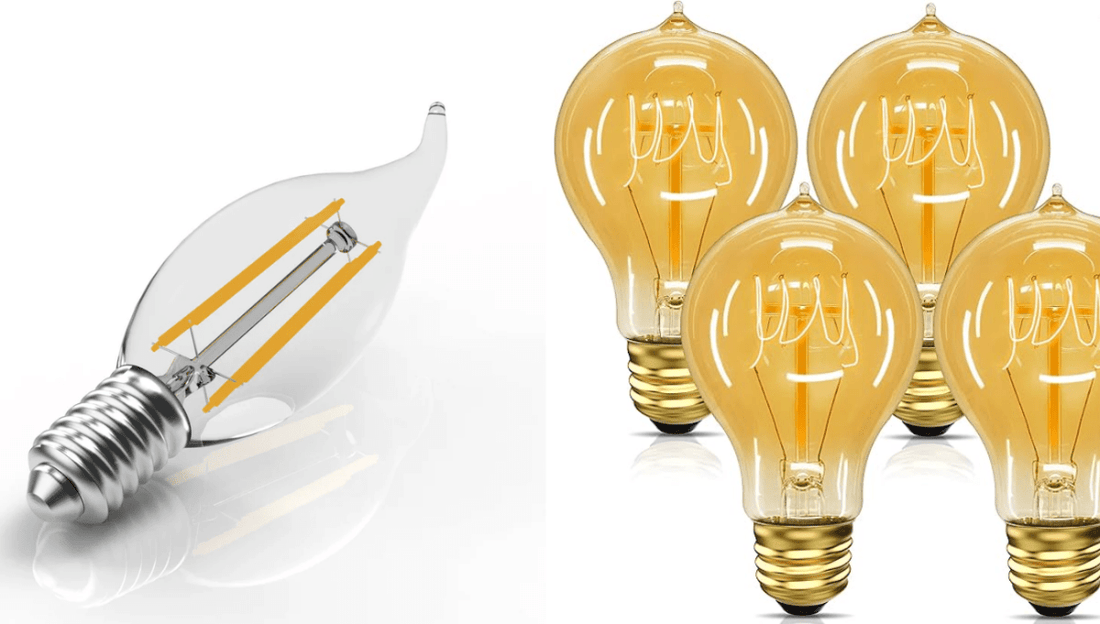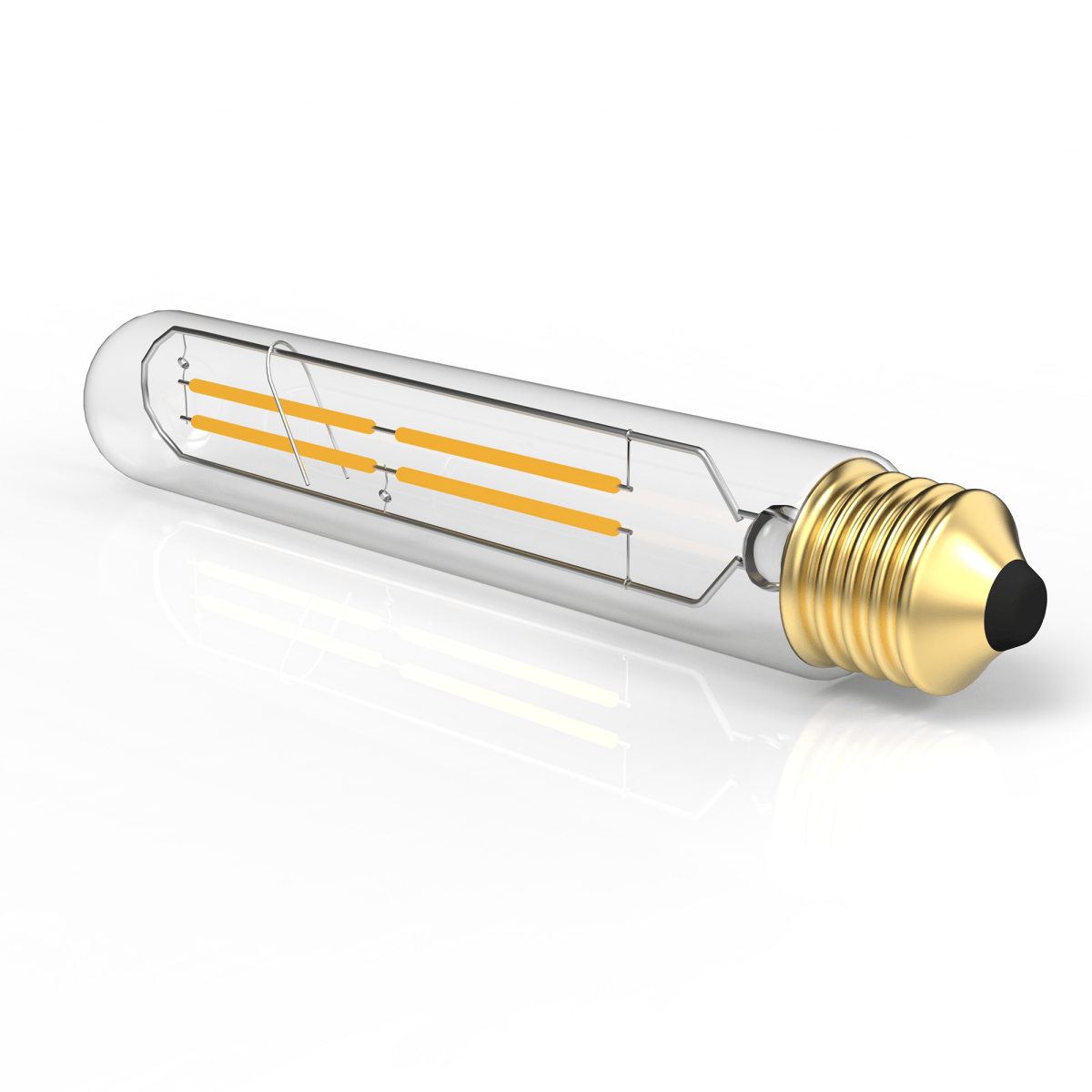Probably the two most common types of bulbs for lighting inside the house, office, or business are the LED Filament Bulb and the incandescent bulb. While both emit warm, inviting light, they are extremely different when it comes to factors such as energy efficiency, lifespan, heat output, and environmental impact. For one comparison between these two lighting technologies, here are a few key facts and figures regarding their optimal uses.
- Energy Efficiency: LED vs. Incandescent
In most ways, one of the most marked differences between the two competitors – the incandescent bulb and the LED Filament Bulb – is energy consumption.
LED Filament Bulbs: The U.S. Department of Energy claims that the LED bulbs are able to conserve as much as 90 percent of electricity when compared to the incandescent bulbs. For instance, a 7 watt LED filament bulb can emit the same amount of illumination as an incandescent one weighing 60 watts. This means that substantial amounts of electricity can be saved.
Incandescent Bulbs: Incandescent bulbs are highly inefficient as they convert only 10 percent of the energy used into light and the remaining energy is heat. That is why they win the title of energy-hungry.
Did you know: You can save about $70 on a bulb over its lifetime by replacing a 60W incandescent equivalent 7W LED bulb at average U.S. electricity rate.
- Lifespan: Long-lasting LED Bulbs
The lifetime of the bulb determines how often you will need to replace it, which determines how much you will pay for the maintenance.
LED Filament Bulbs: These bulbs are engineered to last up to 15,000 to 25,000 hours according to usage. This goes further than a decade in usual usage; that is about three hours a day.
Incandescent Bulbs: An incandescent bulb lasts about only 1,000 to 2,000 hours. So you will need to replace it often. For example, for daily usage, it might burn out within less than a year if you use incandescent bulbs.
Fact: If you make use of an incandescent bulb for 3 hours a day, you would replace it after around 333 days, but an equivalent use by an LED filament bulb would last 13 years.
- Heat Emission: How LEDs Stay Cool
Heat Generation: It is one of the main reasons behind efficiency as well as safety.
LED Filament Bulbs: LED lights produce so little heat that you can touch it after hours of use. In fact, LEDs manage to convert 99 percent of electricity into light instead of wasting it into heat. Thus, LED bulbs prove to be one of the best options in cramped or enclosed spaces where heat might become an issue.
Incandescent Bulbs: Incandescent bulbs can get phenomenally hot-heating up so that burns may occur from mere contact. They are often used in applications like heat lamps or incubators where heat is required.
Cool Fact: The heat of an incandescent bulb can hit a blistering 200°F (93°C), while a LED filament bulb rarely breaks the 90°F (32°C) mark even hours after.
- Environmental Impact: LEDs Take the Lead
That aside, the implications of your lighting choice on the environment are yet another factor.
LED Filament Bulbs: Here, LED lights are quite more environment friendly as they consume low energy and last for a very long time, thereby leaving much lesser material to waste. They do not contain harmful chemicals such as mercury and are fully recyclable.
Incandescent Bulbs: It's obvious that they consume much more energy and leave a larger footprint in the environment. How often a household replaces them and burns much more energy simply adds to greenhouse gasses in the form of carbon emissions. Incandescent bulbs are not easily recycled like LEDs.
Did you know? Replacing incandescent bulbs with LED lighting can cut carbon dioxide emissions from a typical house by nearly half a ton a year.
- Beauty: Old-world Romance Meets New-tech Glamour
While form is not to be slighted, in lighting too, looks count for much, too.
LED Filament Bulbs : The LED cousin of old incandescent bulbs and looks just like the classic look of older incandescent bulbs, but with a visible filament plus enclosed within clear glass. It marries such nostalgic design with sophisticated energy-efficient technology, making it suitable for decorative lighting that can be used in chandeliers, exposed bulb fixtures, and industrial-style lighting.
Incandescent Bulbs: One very famous, for sure, for a warm, natural light; however, they'll do best in cozy, ambient settings like bedrooms or living rooms. That being said, the aesthetic divide between the LED and the incandescent is quickly closing, as the LED filament comes in the same warm glow minus energy-sucking highlights.
- Cost Comparison: Upfront vs. Long-term Savings
As with any buy, cost is a consideration, but here, consider not only the up-front cost but also what you will save in the long term.
LED Filament Bulbs
These bulbs cost more to purchase up-front-$5 or $15 for one bulb-but will pay for themselves in longer life spans and reduced energy use. One estimate puts an LED's cost savings at about $100 over its lifetime.
Incandescent Bulbs: The incandescent bulbs seem expensive at a glance; they range from $1 to $2 per bulb. But their undesirable life span and high consumption of energy make it a costlier idea in the long run.
- Lumens and Dimming Capability
Both of the bulbs come in different levels of brightness. However they also vary with each other based on how well they can dim.
LED Filament Bulbs: Out of the most LED filament bulbs can be dimmed, not all. If you're going to use a dimmer switch, then there's another choice to make choosing dimmable LED bulbs. Then, also, check if it matches your model. LEDs also have different brightness levels, in the form of lumens, and according to application or function of lighting, though.
Incandescent Bulbs: An incandescent bulb, it is, is intrinsically dimmable too and works fabulously with dimmer switches-one of the merits it has. It is smooth, ranging from bright to low light; therefore it can be put in the dining room, bedroom, and space.
Applications: Where to Use LED Filament and Incandescent Bulbs they will provide energy efficiency and aesthetic value for both domestic and commercial purposes that include living room applications, restaurants, bars, cafes, and decorative lighting. They can be used for outdoor installation since they are also rugged in use when used in low temperatures.
Incandescent Lamps: They are usually used in applications where warm white light is desired and energy efficiency is not an important criterion. It is mostly used in oven utility lights, radiant heating lamps, and many more, which require higher heat output. With passing days, the demand for incandescent lamps is decreasing, as there are policies against energy consumption and with breakneck progress in LEDs.
Conclusion
Where both the incandescent bulb and the LED filament bulb have their merits, energy efficiency, lifespan, heat emitted, and environmental issues are much more favorable as compared to LED filament bulbs. Although incandescent bulbs have some advantages toward a bit more economical cost of initial purchase and dimmability, the long-term cost savings for sustainability are on the side of the better smart choice for most modern applications for LED filament bulbs.
But if you are considering a good time to change the lighting, it is now the best opportunity to consider that new vintage-inspired LED filament bulb, the one which will combine the best of old-world style with modern efficiency. You won't save some energy money but you'll also serve with a more resilient and eco-friendly solution for business or your home.
























































































